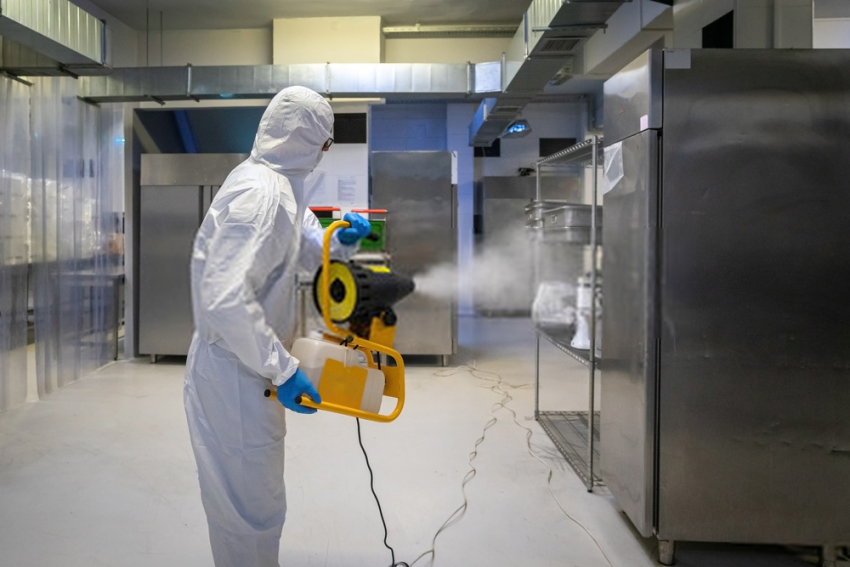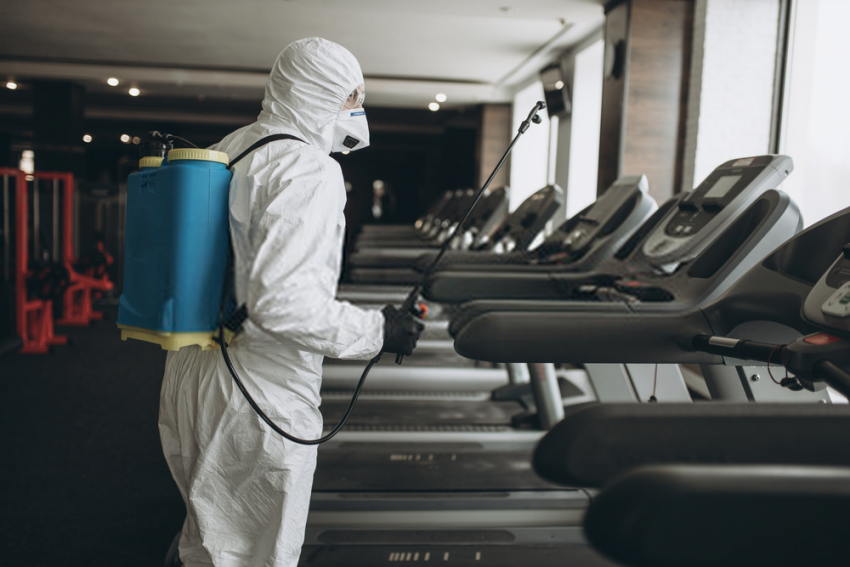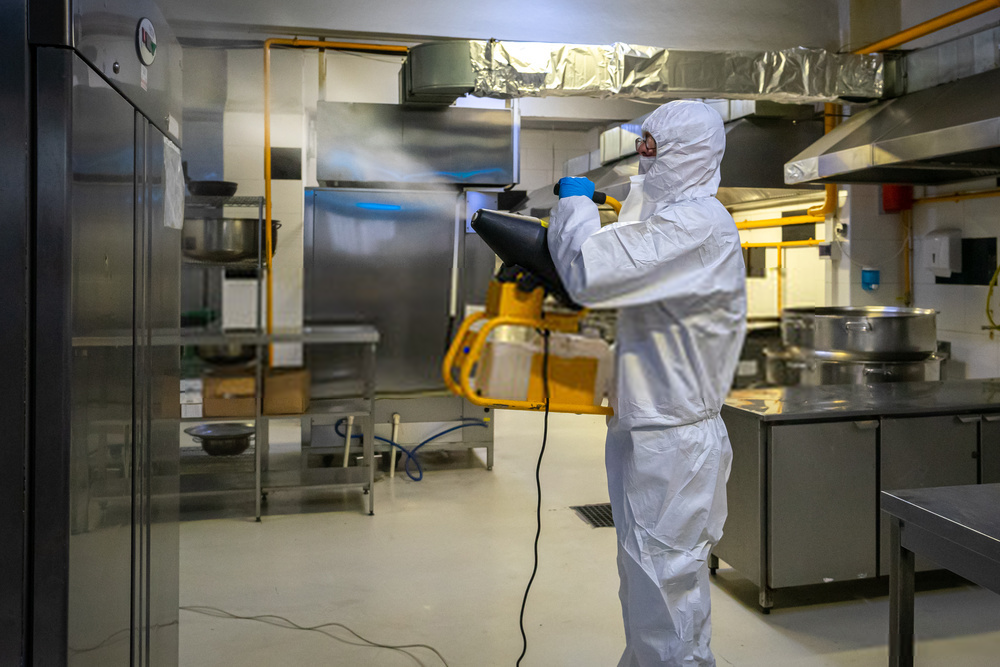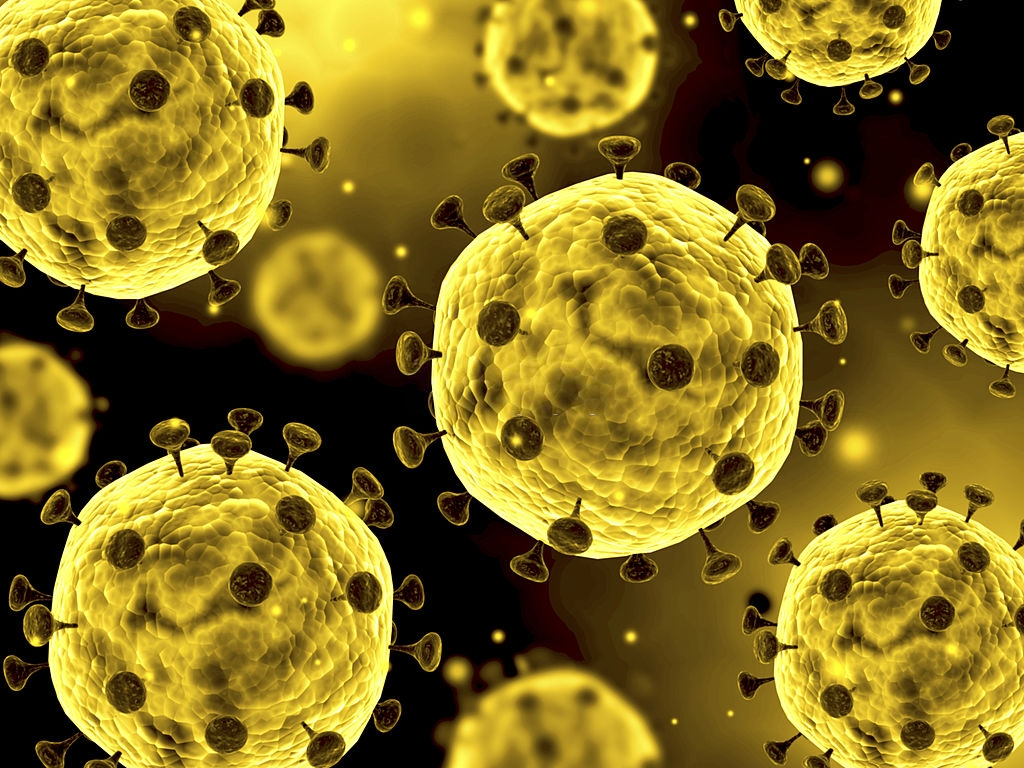Many businesses are reevaluating their cleaning and hygiene protocols in order to ensure a safe return to work during the novel coronavirus pandemic. As a result, disinfectant foggers are being considered for use in a lot of new industries for the first time. But what are they, how do they work, and are they right for your business? Find out now.
What is disinfectant fogging?
Disinfectant fogging involves saturating an entire room with a microbial substance that can purify and remove pathogens from the air, as well as from surfaces within the room. This type of large-scale disinfection process is typically carried out sparingly in high risk areas because of the risk of inhaling the disinfectant solution, and the related time it takes to safely clean a room using this method. Despite these drawbacks, disinfectant fogging is highly effective at combating pathogens, particularly those that are airborne or carried in respiratory droplets, such as the flu virus or COVID-19 coronavirus.

How do disinfectant foggers work?
All foggers work by filling the room with a solution with disinfectant properties. There are a number of varieties of disinfectant fogger machines on the market, which provide different types of fogging treatment. Choosing the right treatment for your facility will depend on its use, potential pathogen exposures, and the surfaces to be disinfected. The most common treatments are:
- Chemical fogging
- Vaporized hydrogen peroxide
- Ozone
- Chlorine dioxide
- Ionization
- Chemical fogging
A chemical fogger can be a purpose-built, permanent structure in a factory or warehouse, or a mobile unit brought into a workplace as needed. Chemical foggers work by dispensing a fine mist of disinfectant solution until the atmosphere is supersaturated. This applies an even coating of solution to all surfaces in the room, as well as disinfects the air. The length of the treatment depends on the size of the area being fogged, but typically takes 30-60 minutes to complete, with an additional 60 minutes or more for the mist to dissipate and the air in the room to return to breathable levels. - Vaporized hydrogen peroxide (VHP)
This is a popular method of disinfectant fogging used in medical settings and pharmaceutical environments, for cleanrooms and similar. Cleaning with VHP involves the additional step of dehumidifying the room, and takes longer to complete. Usually VHP lasts 2-4 hours fogging followed by aerating with clean air to render the room safe for use. Unlike chemical foggers, VHP fogging cannot penetrate organic biofilms and residues, and therefore is unable to remove all bacteria and pathogens. VHP fogging also requires pre-cleaning in order to be effective. - Ozone fogging
Ozone is a highly reactive compound and as such is produced at the point of use by passing air through a high-energy source such as UV light. In order to treat a workplace with ozone, the room must be humidified before ozone generation, and cleared with fresh air after the treatment. This type of fogging usually takes 30-90 minutes from start to completion. The use of ozone as a fogging agent is generally inadvisable in areas with corrodible metals such as aluminum, zinc, copper and iron. Humans are particularly sensitive to ozone, and it is highly reactive once it has entered the respiratory tract, so extra precautions need to be taken to completely air the room after fogging has been completed. - Chlorine dioxide (ClO₂) treatment
Chlorine dioxide is a good choice for fogging because the gas breaks down into harmless salts. However it is an unstable compound that has to be generated on location, and requires strict temperature and humidity parameters that make it unsuitable for all purposes. Generally, chlorine dioxide is generated using sodium chlorite and chlorine gas, so there is an element of risk involved in handling the harmful gas during this process. Chlorine dioxide fogging should therefore always be performed by a trained and licensed professional. - Ionization
This process involves passing air over ionizing tubes to create charged ions that seek out and neutralize naturally charged airborne microorganisms. Ongoing disinfection can be achieved with ionization by releasing a controlled amount of positive and negative ions, and some commercial units produce a continual supply of ionized radicals to constantly maintain a clean environment.
| PROS AND CONS OF FOGGING METHODS | ||
| METHOD | PROS | CONS |
| Chemical fogging | Relatively fast method, widest range of solutions | Harmful to breathe, more likely to linger |
| Vaporized hydrogen peroxide | Highly efficient, targeted fogging | Cannot work on biofilms, requires low humidity |
| Ozone | Easy to produce on site, fast, no residue | Unstable compound, cannot be stored |
| Chlorine dioxide | No harmful residue | Requires strict humidity/temperature parameters, uses chlorine gas |
| Ionization | Long-lasting results, widest surface coverage | Less effective than other methods at treating all bacteria |
Types of fogger machine
There are several different types of sanitation fogger on the market, depending on the fogging method used and the industry and location of the property. Permanent commercial foggers can be installed in warehouses and medical facilities and situated for optimum use within that specific environment. Some units, particularly ionization and UV systems, are incorporated into existing utility structures, such as HVAC systems. Freestanding units are also available for businesses that prefer to pay per treatment rather than invest in fogging machines directly.
Foggers typically fall into one of several types:
- Wet foggers (including misters and electrostatic sprayers)
- Ultra low volume foggers
- Dry foggers
Wet foggers vs. dry foggers
Using a fogger, antibacterial solutions can be applied either as a fine mist (liquid) or as dry vapor. Dry fogging, also called thermal fogging, produces smaller particles, which can better penetrate surfaces and disinfect a wider area. This method also reduces the downsides associated with liquid buildup, such as condensation and corrosion.
Whether or not a wet or dry fogger is most appropriate for a decontamination task depends on the environment of the workplace and the specific solution being used. Changing the chemical state of a solution from liquid to gas can destabilize the compound and alter its effectiveness or safety. A professional decontamination company can assess your location’s requirements and recommend the best fogging methods and solutions.
Disinfectant foggers vs. misters
Misters fall on the wet fogging spectrum, and are used to distribute a fine spray of liquid particles, rather than gas or vapor. Mist treatments are generally cheaper than dry fogging, but are a less precise application method. Typically, misting a room results in some surfaces remaining untreated, and mist can condense and cause runoff that is problematic around electronics and damp-sensitive equipment and surfaces.
Disinfectant foggers vs. electrostatic sprayers
Electrostatic sprayers perform a similar function to wet foggers, but they positively charge particles as they are distributed. Most surfaces are negatively charged because they are naturally grounded, and so attract the positively charged droplets. This leads to a more thorough and even coating of disinfectant across all surfaces, even those that are harder to reach with traditional wet spraying methods.
What are ULV foggers (Ultra Low Volume)?
Ultra Low Volume (ULV) foggers are wet foggers that produce smaller particles than standard wet foggers or misters. ULV technology mitigates some of the downsides of wet fogging, as the smaller droplets remain suspended in the air longer and achieve better distribution throughout the treatment area.
Are disinfectant foggers safe?
There is always a risk involved in using any chemical cleaner, and disinfectant foggers are no different. Before fogging any workplace, a professional should evaluate the environment and disinfectant needs, and determine what disinfectant to use in a fogger. An ambulance company in New Jersey was ordered to cease fogging by the EPA after the incorrect application of a pesticide solution caused workers to become sick.
In general, foggers should only be used in conjunction with specially formulated disinfectant solutions designed for aerosolized application. Any workers in the vicinity should use appropriate PPE, including hand and eye covering and respirators, and any areas that are fogged should be aired thoroughly before being reopened for general use.
| PROPERTIES OF TYPES OF FOGGER | ||
| TYPE OF FOGGER | WET/DRY | PARTICLE SIZE |
| Mister | Wet | 25-100 microns |
| Wet fogger | Wet | 25-100 microns |
| Electrostatic sprayer | Wet | 25-100 microns |
| ULV fogger | Wet | 8-15 microns |
| Dry/thermal fogger | Dry | 0.5-2 microns |
Where can foggers be used?
Although antibacterial foggers have traditionally been used in industrial and medical settings, they are increasingly common in everyday cleaning situations. With international concern about viral transmissions, fogging for home use, for offices, for schools, for COVID-19, and for vehicles is becoming more prevalent.
In order to be effective, fogging has to be carried out in enclosed spaces that can be sealed off for at least a couple of hours. Train cars, school buses, emergency and personal vehicles are good environments for fogging, and this method of disinfection can be faster and more efficient than manual cleaning methods.
Before fogging any room or vehicle with a home fogging kit, check for instructions regarding the room size and temperature and humidity parameters. Trying to fog under the wrong conditions can lead to the treatment being ineffective, as can fogging too large an area. Fogging too small an area, however, can result in oversaturation and unsafe conditions.
Small business uses for foggers
- Public restrooms
- Locker rooms
- Gyms and pools
- Veterinary and medical clinics
- Commercial kitchens
- Company vehicles
Germicidal room foggers are available for at-home use. The Pheno D fogger is EPA registered as an antimicrobial agent effective against viruses, bacteria, mold, and fungi in bathrooms, locker rooms, and similar. Whenever you are using a home fogger, It is important to ensure that the area being fogged is securely sealed during the treatment, and properly aired afterward. Always follow the instructions on the label, and remember: fogging is no substitute for good cleaning.
Industries that use fogging for cleaning
- Food processing
- Animal husbandry
- Medical and pharmaceutical
- Wastewater plants
- Hospitality
- Manufacturing
- …and more!
Fogging effectiveness for COVID-19
Currently, fogging (alone) does not meet the CDC guidelines for COVID-19 prevention protocol, as it does not require surfaces to be pre-cleaned. For the treatment of this specific virus, fogging should be considered an extra precaution, rather than the sole solution. Consult the EPA’s “List N” for the most up-to-date solutions and cleaners that are most effective at eradicating the COVID-19 virus.
In conclusion, fogging is a proven, effective method of disinfecting a large area in a relatively short period of time, but it isn’t a total cleaning solution. Fogging has a proven history within industrial settings and has many small business applications that will make it appealing to companies looking to reopen and protect staff and customers during the COVID-19 pandemic. However fogging should always be carried out by a trained professional in conjunction with other good cleanliness and hygiene practices.


